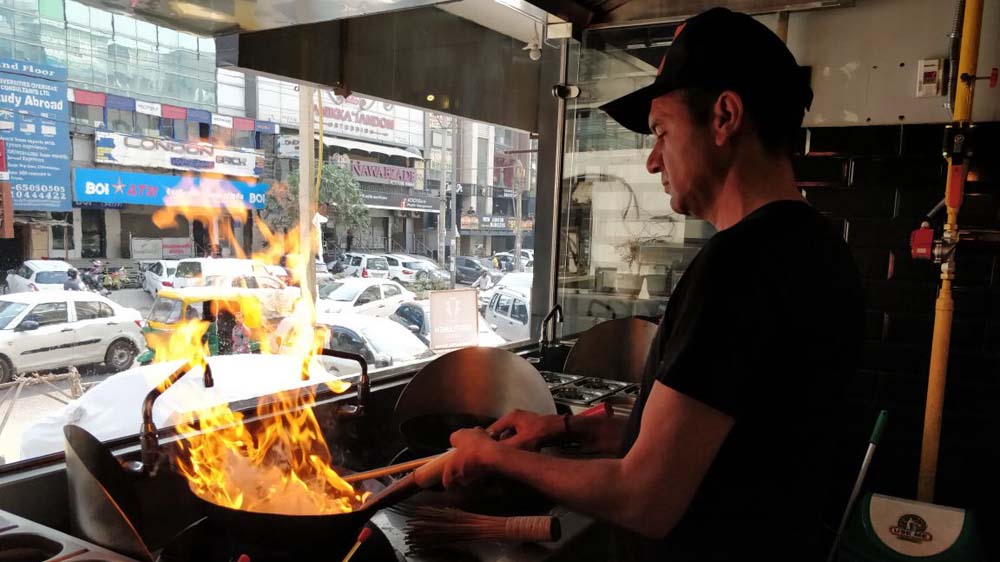
In a world where people are constantly moving towards preventive healthcare, healthier food options are what they are going for. In fact, a recent study concluded that over 47 percent of Indians prefer their food to be healthy and these numbers are only increasing at an astonishing rate.However, there remains this ongoing clash between the need to opt for healthier options and at the same time the cravings for mouth-watering junkies. And Wok To Walk provides the perfect resolution with its scrumptious but healthy meals. Wok to Walk had set its foot in India towards the end of last year through a master franchisee, has already set up three outlets in the last six months and is looking to expand through a mix of own outlets and sub-franchisee route.
In conversation with Gautam Kamra, General Manager (Operations), Wok To Walk India, about the chain, its USP and its expansion plans in the country.
Tell us about Wok to Walk, its inception and the journey so far.
It is a story of adventure and exotic flavours. Few years ago, on a journey in South East Asia, the promoters found their passion: Asian street cuisine. Back in Europe, they spotted a need for that authentic experience. Hence in 2004, the promoters created their own version of the rudimentary street kitchens they had fallen in love with. The concept was simple –giving customers total flexibility and involving them in the cooking experience through the use of open kitchens. The first Wok to Walk restaurant was so successful that it soon started to pop up in the coolest spots of many European cities. So, 14 years and 90+ restaurants later, Wok To Walk is the No. 1 wok kitchen chain in Europe. Authenticity, together with the simplicity of the concept, is the secret recipe to Wok to Walk’s international success.
What makes Wok to Walk any different from the other food joints? What is its USP?
Wok to Walk specializes in custom made, fresh, nutritious and quick stir fried Asian cuisine. We pride in offering, quick wok meal prepared in less than 5 minutes, freshest ingredients which are sourced and used, healthy food options with no MSG content and option to have infinite combinations in one box.
Tell us about the food options offered by Wok to Walk in India.
Wok To Walk India offers vegetarian, vegan as well as non-vegetarian options.
Did you curate your food options in order to suit the Indian consumers and their tastes?
Wok to Walk has taken cues from customer feedback and has responded to demands with new menu additions to suit Indian taste preferences. Recently, dim sums, Famous Flamers and Hot Wokkin Treats, made with our new Mumbai sauce were launched successfully for our Indian customers.
Who are your target consumers?
Wok To Walk can be enjoyed by anyone, anytime and anywhere. We believe our customer segment is aged between 16-35 years.
What do you think of Indian market in terms of accepting this new concept? We already have Subway and the likes offering fresh salads in our sandwiches...How will Wok to Walk pose a competition in this segment?
In this digital age, Indian market has become extremely receptive to new concepts and healthier choices. Our USPs including customization of Asian meal, no MSG and quick preparation time put Wok To Walk in a completely unique category and we don’t see any direct competition in this domain. Customers wanting to have their Asian food fix right away, at a price they want to pay and exactly as they like it are going to be the real Wokstars for us.
Meanwhile, we also have grocerants coming up for quick food options, almost an alternative to fast food options offered by restaurants. How do you see them as competition? How will you cope?
Wok to Walk boasts of fresh and healthy meal that’s cooked in a live kitchen right in front of the customer. This is what differentiates us from grocerants and other such models.At Wok to Walk, customers decide what they eat and how much they spend, playing with the 3-step-menu (base, favorites and sauce). Total freedom for a perfect meal! One is free to eat in or take away the meal. The MSG free meal is cooked in a fiery Asian cooking show, on the spot, in less than 5 minutes.
Tell us about your retail presence.
Currently, there are 3 Wok to Walkoutlets across Delhi NCR.The master franchise plans to have 60+ outlets across India, by the end of 2022.
Tell us about your marketing strategies. What percentage of your overall revenue goes into marketing and promotions?
The brand is spending heavily on digital marketing to connect with its relevant target consumers.Significant part of the budget in future will also be spent upon activities driving online deliveries for Wok to Walk.
Copyright © 2009 - 2024 Restaurant India.









